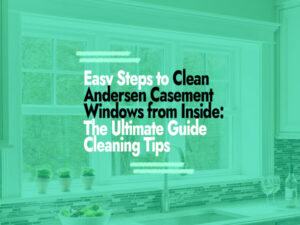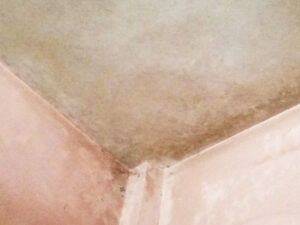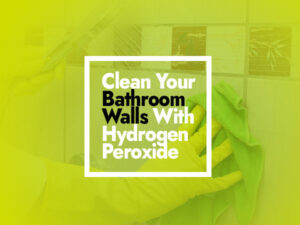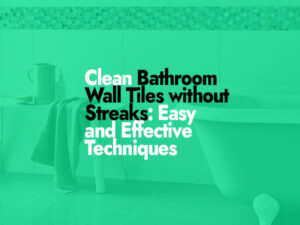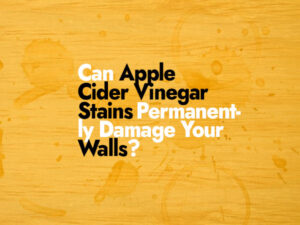Hi there! As a homeowner, I know firsthand how frustrating it can be to deal with calcium deposits on block walls. These unsightly white marks can be a real eyesore and can even lead to damage if left untreated. Over the years, I’ve tried countless methods to remove calcium deposits from my own block walls, and through trial and error, I’ve found several effective ways to get rid of them for good.
In this blog post, I’m excited to share with you five of the most effective ways I’ve found to remove calcium deposits from block walls. These methods are tried and true, and have worked wonders for me in the past. Whether you’re dealing with a small patch of calcium buildup or a larger, more stubborn area, these tips and tricks are sure to help you get the job done. So, let’s dive in and say goodbye to those pesky calcium deposits once and for all!

Method 1: Vinegar and Water Solution
Vinegar is a household staple that has a wide range of uses, including cleaning. It is a natural and effective way to remove calcium deposits from block walls. To use vinegar to clean calcium deposits, you will need:
- White vinegar
- Water
- Spray bottle
- Scrub brush or sponge
Steps:
- Mix equal parts white vinegar and water in a spray bottle.
- Spray the solution onto the calcium deposits on the block wall.
- Allow the solution to sit for 10-15 minutes.
- Use a scrub brush or sponge to scrub the calcium deposits off the wall.
- Rinse the area with water to remove any remaining vinegar solution.
Advantages:
- Vinegar is an inexpensive and readily available cleaning solution.
- It is a natural and eco-friendly way to clean calcium deposits.
- Vinegar can also be used to clean other surfaces in your home.
Disadvantages:
- The smell of vinegar can be strong and unpleasant.
- Vinegar may not be effective on very stubborn or large calcium deposits.
Method 2: Lemon Juice and Baking Soda Paste
Lemon juice and baking soda are two natural ingredients that can be combined to create a powerful cleaning paste. The acid in lemon juice helps to dissolve calcium deposits, while the abrasive texture of baking soda helps to scrub them away. To use this method, you will need:
- Fresh lemon juice
- Baking soda
- Bowl
- Spoon
- Scrub brush or sponge
Steps:
- Mix equal parts fresh lemon juice and baking soda in a bowl to create a paste.
- Apply the paste to the calcium deposits on the block wall.
- Allow the paste to sit for 10-15 minutes.
- Use a scrub brush or sponge to scrub the calcium deposits off the wall.
- Rinse the area with water to remove any remaining paste.
Advantages:
- Lemon juice and baking soda are both natural and eco-friendly cleaning solutions.
- This method is effective on stubborn and large calcium deposits.
- Lemon juice also has a pleasant scent, which can help to mask any unpleasant odors.
Disadvantages:
- This method can be time-consuming, as the paste needs to sit for 10-15 minutes before scrubbing.
- Lemon juice and baking soda may not be as effective as other methods on very large or stubborn calcium deposits.
Method 3: Commercial Calcium Lime Rust Remover
Commercial calcium lime rust removers, such as CLR or Lime-A-Way, are specifically designed to remove calcium deposits from surfaces. These products are widely available at home improvement stores and can be an effective way to remove calcium deposits from block walls. To use a commercial calcium lime rust remover, you will need:
- Commercial calcium lime rust remover
- Protective gloves
- Scrub brush or sponge
- Water
Steps:
- Follow the manufacturer’s instructions for your chosen calcium lime rust remover.
- Wear protective gloves to avoid skin irritation.
- Apply the calcium lime rust remover to the calcium deposits on the block wall.
- Allow the product to sit for the recommended amount of time.
- Use a scrub brush or sponge to scrub the calcium deposits off the wall.
- Rinse the area with water to remove any remaining
Advantages:
- Commercial calcium lime rust removers are specifically designed to remove calcium deposits and can be very effective.
- They can work quickly, with some products requiring only a few minutes of contact time.
- These products are widely available and can be found at most home improvement stores.
Disadvantages:
- Commercial calcium lime rust removers can be more expensive than other cleaning solutions.
- They can contain harsh chemicals that can be harmful to the environment and to your health.
- It is important to follow the manufacturer’s instructions carefully to avoid damage to the block wall or other surfaces.
Method 4: Power Washing
Power washing is a method that involves using high-pressure water to clean surfaces. It can be an effective way to remove calcium deposits from block walls, as well as dirt, grime, and other debris. To use a power washer to clean calcium deposits, you will need:
- Power washer
- Protective eyewear and clothing
- Water source
- Cleaning solution (optional)
Steps:
- Put on protective eyewear and clothing.
- Set up your power washer according to the manufacturer’s instructions.
- Connect the power washer to a water source.
- If desired, add a cleaning solution to the power washer tank.
- Point the power washer nozzle at the calcium deposits on the block wall.
- Use the high-pressure water to blast away the calcium deposits.
- Rinse the area thoroughly with water to remove any remaining debris.
Advantages:
- Power washing can be a quick and effective way to clean large areas of calcium deposits.
- It can also remove dirt, grime, and other debris from block walls.
- Power washing can be a good option if you have access to a power washer and do not want to use harsh chemicals.
Disadvantages:
- Power washing can be dangerous if not done correctly, as the high-pressure water can cause injury or damage to the block wall.
- It may not be effective on very stubborn or hard-to-reach calcium deposits.
- Power washing can be noisy and may disturb neighbors.
Method 5: Professional Cleaning Services
If you are not comfortable tackling calcium deposits on block walls yourself, or if you have very large or stubborn deposits that are difficult to remove, you may want to consider hiring a professional cleaning service. Professional cleaners have the knowledge, skills, and equipment needed to effectively remove calcium deposits from block walls. To hire a professional cleaning service, you will need:
- A reputable cleaning company
- A quote for the services you require
- An appointment time that works for you
Steps:
- Research cleaning companies in your area that offer services for removing calcium deposits from block walls.
- Request a quote for the services you require.
- Schedule an appointment with the cleaning company at a time that works for you.
- Allow the professionals to handle the cleaning process.
Advantages:
- Professional cleaning services can be very effective at removing calcium deposits from block walls.
- They can save you time and effort, as well as ensure that the job is done correctly.
- Professional cleaners have access to specialized equipment and cleaning solutions that can be more effective than DIY methods.
Disadvantages:
- Professional cleaning services can be expensive, depending on the scope of the work.
- You may need to schedule the cleaning appointment in advance, which can be inconvenient if you need the work done quickly.
- It is important to research and choose a reputable cleaning company to avoid scams or poor-quality work.
Conclusion
Removing calcium deposits from block walls can be a frustrating and time-consuming process, but with the right methods and tools, it can be done effectively. In this blog post, we have discussed five effective ways to remove calcium deposits from block walls, including using vinegar and water, lemon juice and baking soda paste, commercial calcium lime rust removers, power washing, and professional cleaning services. Each method has its pros and cons, so it is important to choose the one that best fits your needs, budget, and level of expertise. When choosing a method, consider the severity and extent of the calcium deposits, as well as the type of block wall you are cleaning.
Remember to always wear protective gear, follow the manufacturer’s instructions, and test any cleaning solution on a small, inconspicuous area before applying it to the entire wall. With a little patience and effort, you can restore your block walls to their original, clean condition and prevent future calcium deposits from forming.
Additional Tips:
- Prevention is key to avoiding calcium deposits on block walls. Consider using a water softener to reduce hard water buildup, or sealing your block walls to prevent moisture from penetrating.
- Regular cleaning and maintenance can also help prevent calcium deposits from forming. Consider using a mild soap and water solution to clean your block walls on a regular basis, or hire a professional cleaning service to do so.
- If you are unsure about how to clean calcium deposits from block walls, or if you have any concerns about the safety or effectiveness of a cleaning solution, consult a professional cleaning service or a licensed contractor for advice.
We hope this blog post has been helpful in providing you with effective ways to remove calcium deposits from block walls. Remember to always use caution and follow the instructions carefully to avoid damage to your walls or harm to yourself. With a little effort and the right tools, you can restore your block walls to their original, clean condition and enjoy a beautiful, long-lasting finish.


